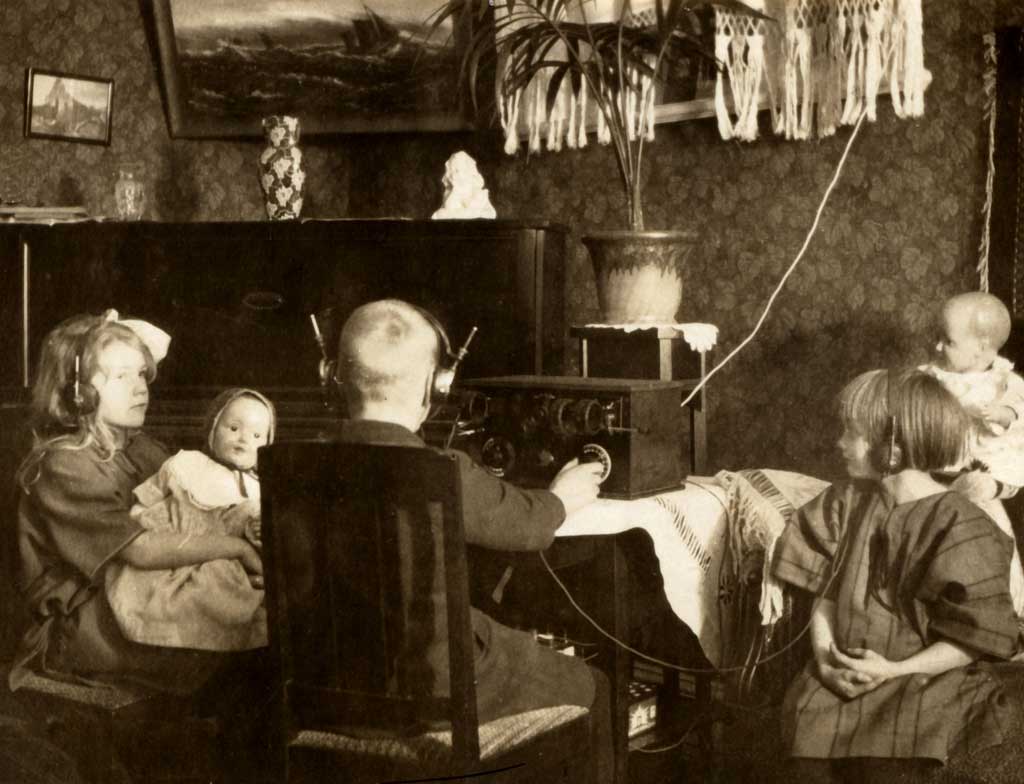New media as a second language
This is the conundrum to which I always return. While it is nice to do blue-sky thinking about what I might do if I was inventing public media from scratch, in reality I live within an organization, a station, a network designed over nearly half a century to tell great, relatively brief stories on the radio. Radio is the “first language” of NCPR journalists and the work they do is at the highest standard. Each weekday, their reporting has at its focus a one-hour broadcast program, which acts as a limiter on how many stories are told, and on how deeply a reporter can go into the details and into the back story of each.

Radio. It’s in our DNA. Photo: Britt-Marie Sohlstrom, Creative Commons, some rights reserved
Many stories cannot be properly told within these limitations. And the broadcast answer to this is the series—a succession of stories told by one or more reporters over a number of episodes of the program that, when taken together, provide the depth and nuance the larger story requires.
Here’s the problem—this approach does not translate well into new media. The best, the most in-depth, the meatiest work done by our journalists is atomized into digital chunks spread across a number of days and weeks. And the best audience-building tools in new media—syndication by other sites, sharing on social media—apply best to single, integrated pieces of (here’s that loathsome word) content, whether short form or long form.
We recognized this problem long ago and have taken numerous stabs at integrating series into something resembling a digital whole. For example we have long used series collection pages that present links to all the stories in a series and gives summaries of each.
More recently, we (and by we I mean our new media developer Bill Haenel) have introduced a series manager that presents the entirety of all the stories in a series into a single page container. It was a huge step forward and you can see the results for yourself in our Photography Week series, and our series Local Lifts, about ski hills across the region. But it still isn’t ideal—more beads on a string than a unified whole–with separate sharing and commenting on each segment, not on the series as a whole.
But on Monday we are rolling out an approach that we see as a watershed for NCPR in digital storytelling—a series that was conceived and produced from the beginning both as a digital whole and as a broadcast series. Our radio listeners will experience the series as usual over the coming week during the Eight O’clock Hour. But Monday morning, a media-rich, lavishly photographed and elegantly appointed (if I do say so myself) presentation of the whole will be available at ncpr.org.
How do you say “stay tuned” in new media?
Tags: listeningpost





.jpg)


Is this “problem/solution” what has turned the Eight O’Clock Hour into the Eight O’Clock 45 Minutes program? Just curious. Otherwise, interesting and informative column.
Good luck but you are what you are and you can’t be all things to all.
One of the beauties of radio news is that there aren’t any photographs. I’m not forced to put up with the latest video that went viral. I really don’t care what video went viral.
Very, very few photographs are worth a thousand words.
Magazines and newspapers like photos because they can take up a lot of space and, if they are really good, do catch eyeballs.
Hi Rolene–
Changes to the broadcast format are pretty much unrelated to changes on the digital side, except as all parts of NCPR are trying to find ways to update their approach and produce work of better quality. NCPR has made big investments of supporter contributions in both the broadcast and the new media end of the shop. Personally, I find the new Eight O’clock Hour format an improvement. The program is more tightly edited and flows better in my opinion. I don’t feel like I’m losing anything by making room for the Marketplace segment at the end of the hour. What do you think of the changes?
Dale Hobson, NCPR
in Canada the CBC developed out of the CNR radio system this came as a result of the nationalaization of the grand trunk, canadian northern & severl aother railways into the CNR, this happened because the Charman of the board of those railways was killed on the sinking of the Titanic. The CBC was very good over the years, many interestuing programs, as of late it has dwindled, and the Short wave frequencies around the worls…well i do belive they are gone replaced by internet raidio of the CBC. Their signal originated out of transmitter at Sackville New Brunswick, the site Reg Fessinden sten his first signal from. CANADA’S first radio station was actuall the one in montreal, call signCFCF, Meaning CANADA FIRST…radio 60.